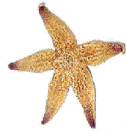Department of Chemistry
Date of this Version
6-23-2006
Abstract
Phosphoenolpyruvate carboxylase (PEPC) is a “multifaceted,” allosteric enzyme involved in C4 acid metabolism in green plants/microalgae and prokaryotes. Before the elucidation of the three-dimensional structures of maize C4 leaf and Escherichia coli PEPC, our truncation analysis of the sorghum C4 homologue revealed important roles for the enzyme’s C-terminal α-helix and its appended QNTG961 tetrapeptide in polypeptide stability and overall catalysis, respectively. Collectively, these functional and structural observations implicate the importance of the PEPC C-terminal tetrapeptide for both catalysis and negative allosteric regulation. We have now more finely dissected this element of PEPC structure-function by modification of the absolutely conserved C-terminal glycine of the sorghum C4 isoform by site-specific mutagenesis (G961(A/V/D)) and truncation (ΔC1/C4). Although the C4 polypeptide failed to accumulate in a PEPC— strain (XH11) of E. coli transformed with the Asp mutant, the other variants were produced at wild-type levels. Although neither of these four mutants displayed an apparent destabilization of the purified PEPC homotetramer, all were compromised catalytically in vivo and in vitro. Functional complementation of XH11 cells under selective growth conditions was restricted progressively by the Ala, ΔC1 and Val, and ΔC4 modifications. Likewise, steady-state kinetic analysis of the purified mutant enzymes revealed corresponding negative trends in kcat and kcatK0.5 (phosphoenolpyruvate) but not in K0.5 or the Hill coefficient. Homology modeling of these sorghum C-terminal variants against the structure of the closely related maize C4 isoform predicted perturbations in active-site molecular cavities and/or ion-pairing with essential, invariant Arg-638. These collective observations reveal that even a modest, neutral alteration of the PEPC C-terminal hydrogen atom side chain is detrimental to enzyme function.


Comments
Published in Journal of Biological Chemistry 281:25 (June 23, 2006), pp. 17238-17245; doi 10.1074/jbc.M602299200 Copyright © 2006 by The American Society for Biochemistry and Molecular Biology, Inc. Used by permission.